Our Services
The Wolfson Unit offers scale model towing tank and model basin tests to assess the performance of full-scale motor and sail powered vessels. The models are built to our exacting standards and tested with state-of-the-art dynamometry which ensures that, when the results are scaled up to full scale, they are accurate. Some of the vessels we have performed tests on include:
- Wind assisted ships
- Sailing and motor yachts
- Naval vessels
- Fishing vessels
- Crew transfer vessels
- Hovercrafts
- Amphibious vehicles
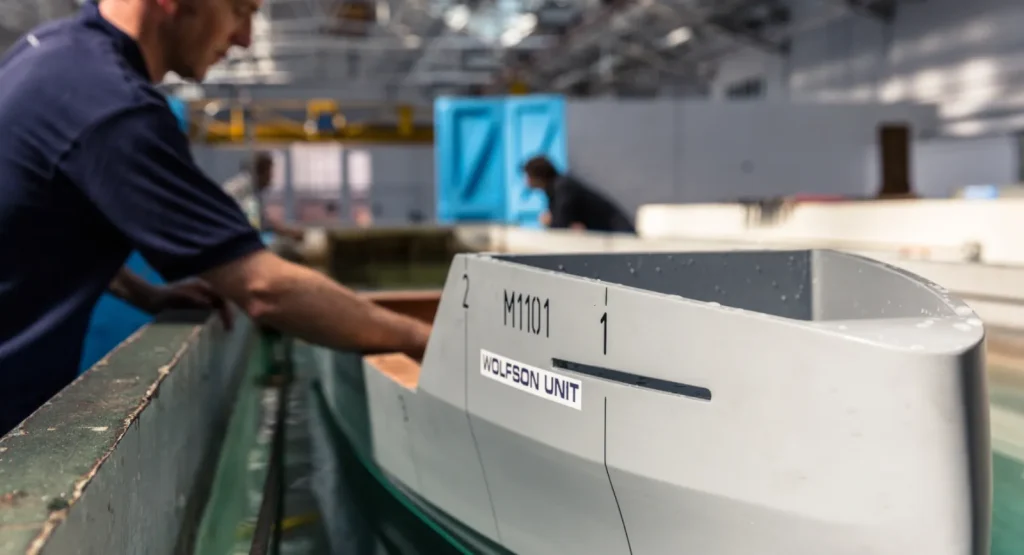
Flexible
Our engineers communicate directly with clients, allowing for flexibility in the test program to get the most useful information to meet clients’ needs.
Your One Stop Shop
Whatever specific engineering problem you’re trying to solve, we have the breadth of knowledge and services to help you work it through.
Calm Water Tests
Calm Water Tests
Calm water resistance tests offer very high accuracy results for the prediction of the power required/speed achieved of the vessel. We offer a number of calm water resistance test services:
- Measurement of resistance and effective power at a range of speeds, displacements and trims.
- Improvements to spray rails, knuckles and chines.
- Trim Optimisation by assessing the optimal positioning of the Longitudinal Centre of Gravity to achieve desired running trim.
- Optimisation of transom wedges, trim tabs or interceptors.
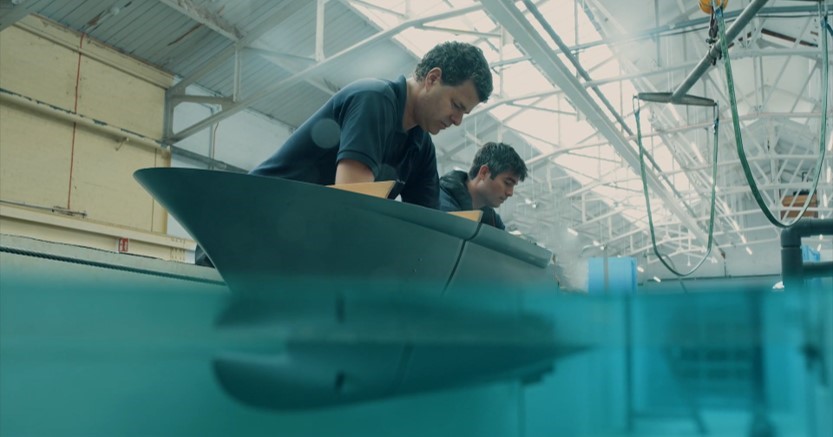
Sailing Yacht
Sailing Yacht
The Wolfson Unit offers several hydrodynamic experiment services on sailing yachts and wind assisted vessels including: calm water resistance, hydrodynamic sailing balance, VPP refinement, seakeeping and manoeuvring.
This includes the testing of yachts for the America’s Cup, various Ocean Races and inshore racing yachts, superyachts and sail training vessels. With its strong experience in both sailing yacht and powercraft testing, the Unit is in a unique position to offer model testing on wind assisted vessels.
These tank testing capabilities are fully complemented by our computational fluid dynamics (CFD), wind tunnel and naval architecture software services.
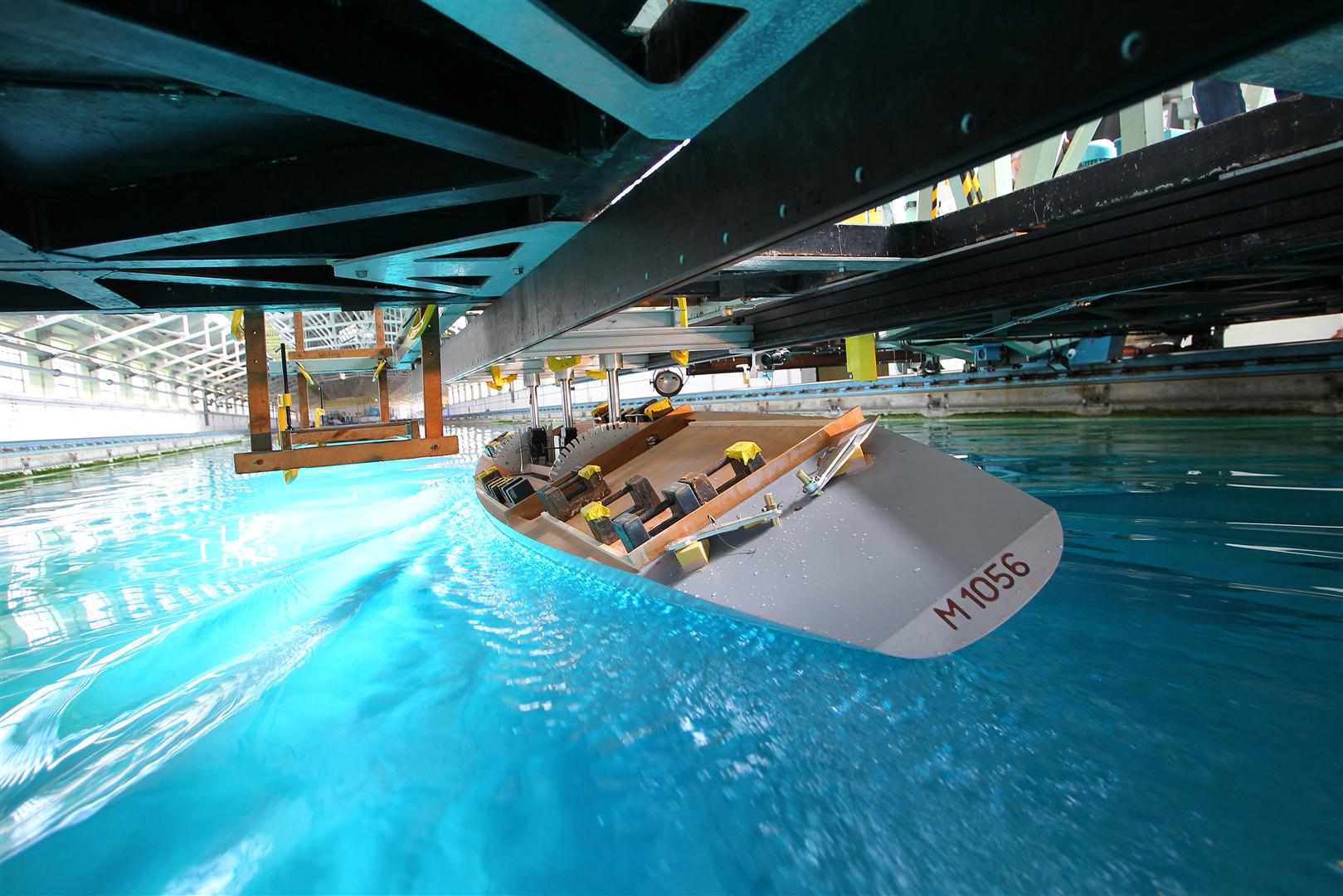
- Calm water resistance.
- Appendage Development.
- Hydrodynamic and Sailplan Balance.
- MultiHulls.
- Velocity prediction program (VPP) Refinement.
- Flow Measurement.
- Seakeeping and Manoeuvring.
Free Running Tests
Free Running Tests
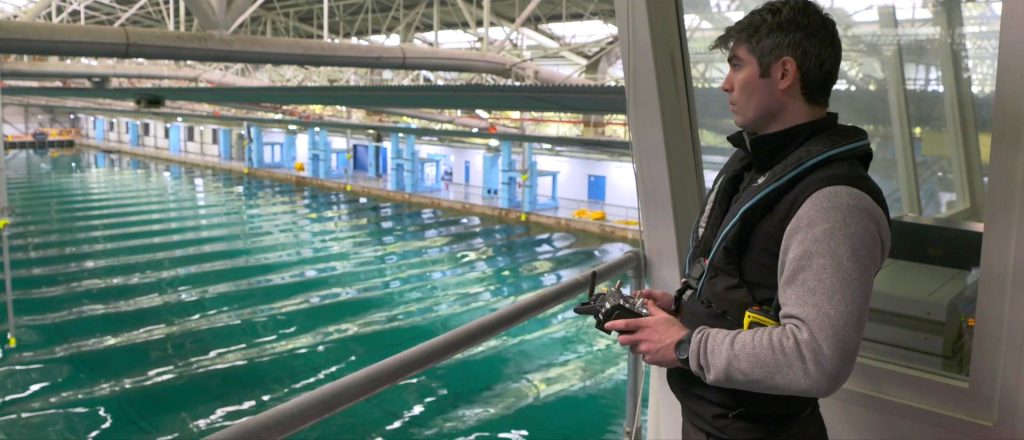
Radio controlled models, built and equipped by the Wolfson Unit, and operating in open water or a seakeeping basin, are used for a variety of experiments.
Recent advances in rapid prototyping have enabled affordable and representative testing of vessels with water jet propulsion, surface piercing, IPS drives and azimuthing pods. These propulsion systems can be used to perform a number of tests on free running models including:
- Manoeuvring and directional stability trials such as Dieudonne spiral tests and zig-zag manoeuvres.
- Docking in high winds and use of bow thrusters.
- Testing of complex or innovative propulsion systems.
- Seakeeping and motions in irregular seas.
- Coupled roll and yaw stability at high speed.
- Broaching tests.
- Propulsion testing – fully instrumented propellers and rudders can be fitted to determine the propulsive coefficients.
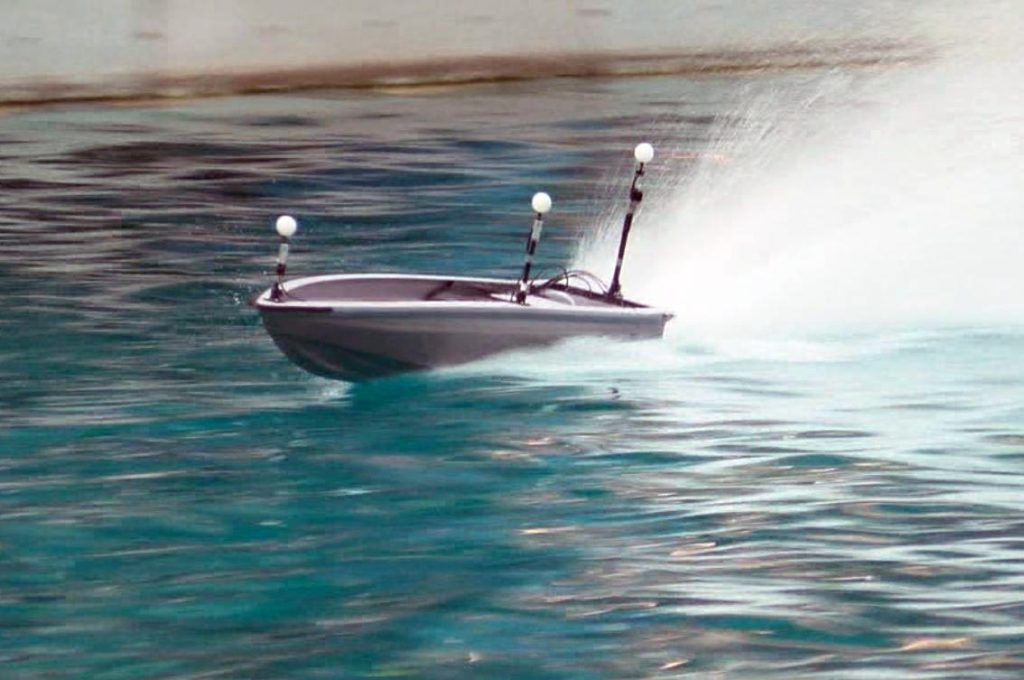
Seakeeping
Seakeeping
Measurement of added resistance, accelerations and wetness at different headings; seasickness incidence and crew performance, stability and seaworthiness in extreme conditions.
Active control device testing
Pitch and roll control systems can be tested to evaluate effectiveness and optimise for both passenger comfort and resistance reduction.
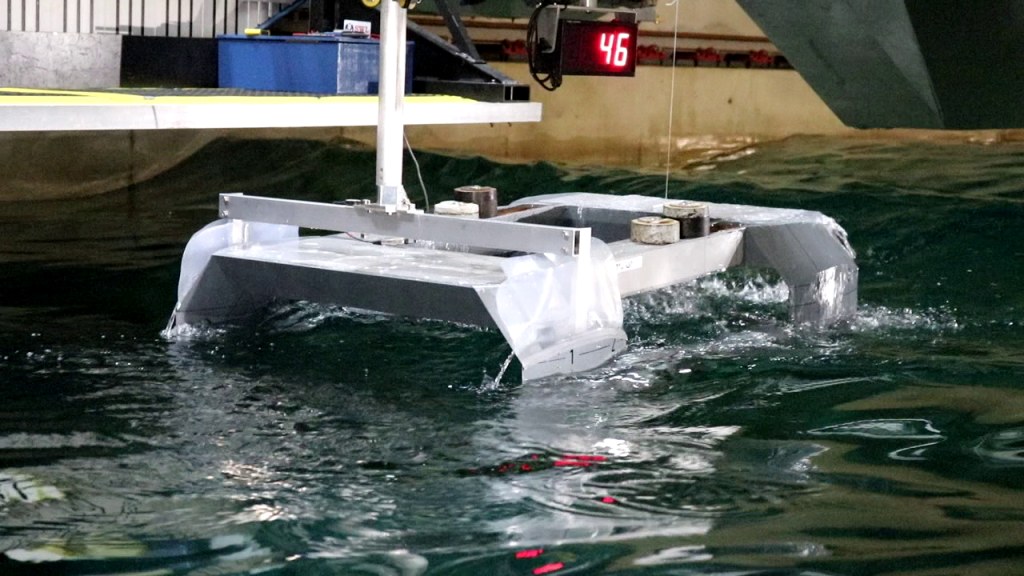
Offshore and Renewable Energy Device Testing
Offshore and Renewable Energy Device Testing
The Wolfson Unit brings decades of expertise in the hydrodynamic testing of wind, tidal, and wave energy devices. We offer direct access to a wide range of testing facilities — including towing tanks and flumes — each with varying size and capabilities to suit specific project needs.
These facilities enable the accurate modelling of waves and currents, supporting experimental investigations for a variety of offshore systems, including:
- Floating Offshore Wind Turbines
- Deployment strategies for Wind Turbines and other offshore assets
- Floating Solar Farms (Floatovoltaics)
- Tidal Turbines
- Wave Energy Converters
- Devices ranging from micro-generators to full-scale platforms
Our experimental testing environment allows developers and designers to evaluate a comprehensive range of parameters to inform and de-risk the development process. These include:
- Device performance optimisation
- Power output measurement
- 6-DOF force and moment analysis
- Calculation of motion damping coefficients
- Acceleration and motion tracking
- Multi-body interaction analysis (motions and forces)
- Mooring and towing force measurement
- Performance assessment in extreme sea states
- Slamming pressures and structural load analysis
- Green water and overtopping phenomena
- Modelling of ballasting and installation operations
This testing capability enables early-stage modelling of installation, maintenance, and operational performance — providing critical insights before progressing to large-scale demonstrations or full deployment.
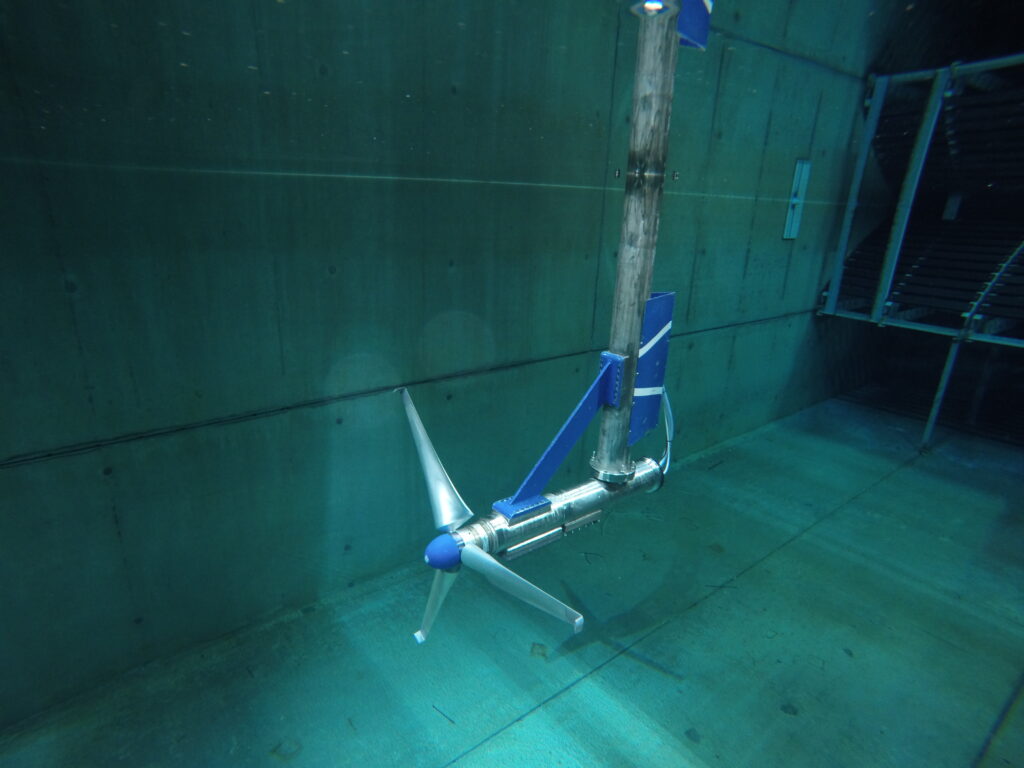
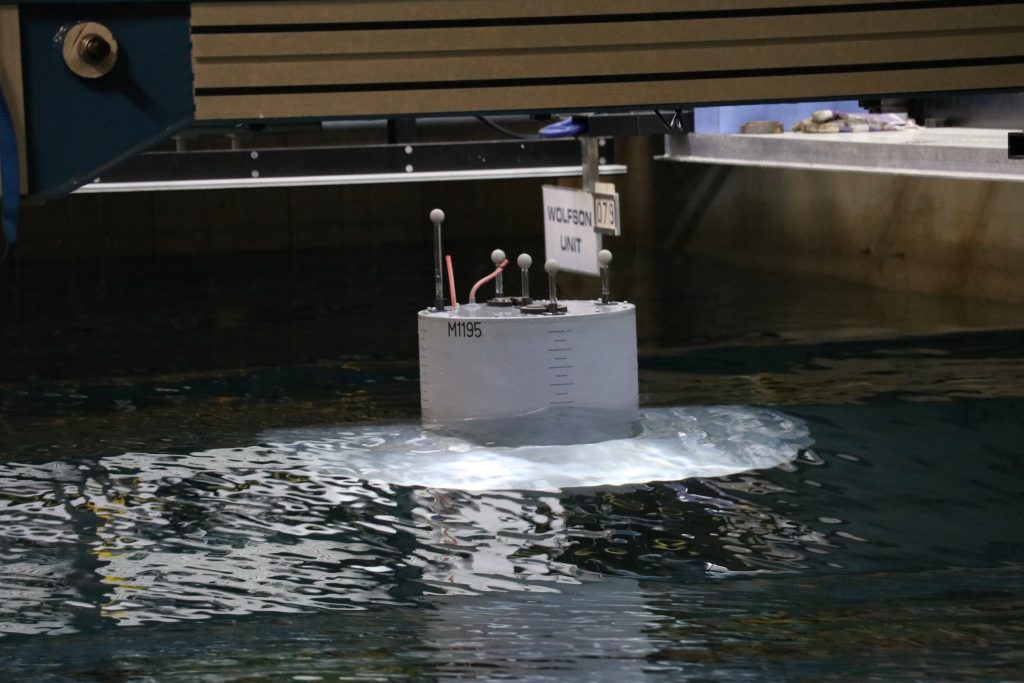
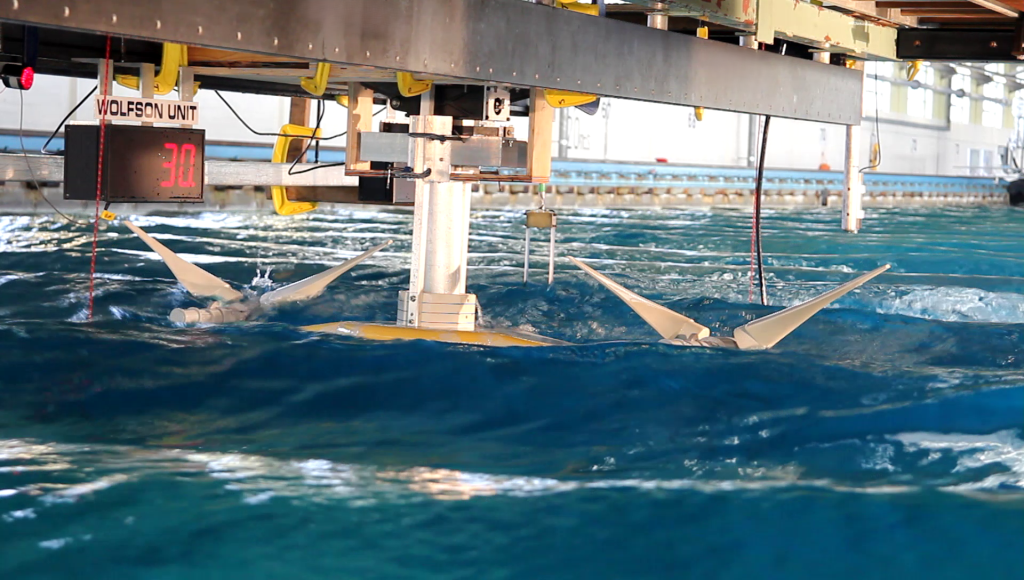
Flow Visualisation and Analysis
Flow Visualisation and Analysis
Delivering improvements in appendage design, bilge keel alignment, flow into propellers and through tunnels to minimise resistance, noise and vibration, and increase propeller efficiency.
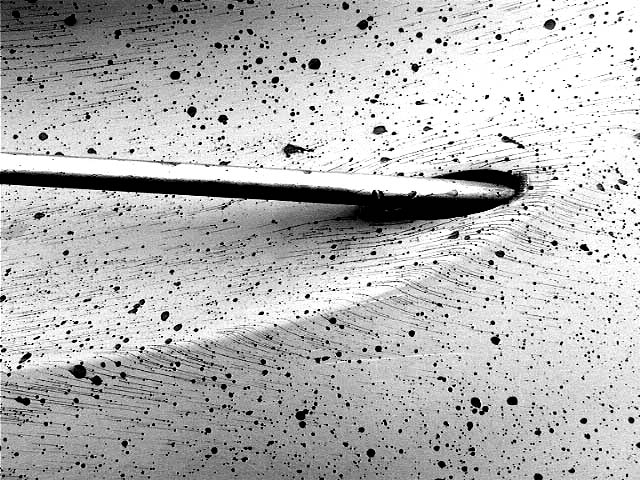
Model Fabrication
Model Fabrication
The Wolfson Unit creates bespoke models for use in experiments. We have many years of experience building and testing models to obtain full scale results. We work in house and with expert model builders to provide high accuracy results.
For example we have created benchtop models to model the flow through smoke detectors, sloshing (and subsequent damping designs) in onboard swimming pools and particle dispersion from onboard exhaust outlets and their influence on passenger comfort.
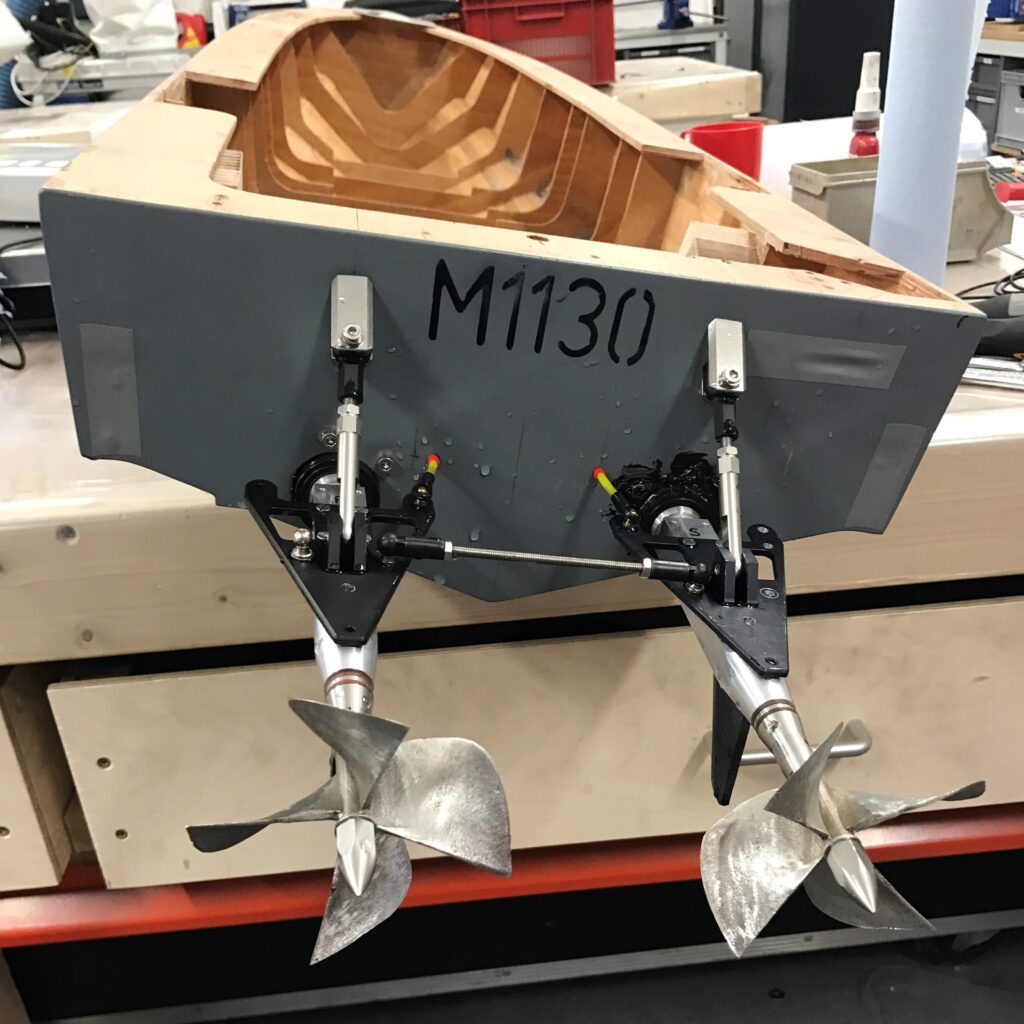
Experimental vs CFD
Experimental vs CFD
The Wolfson unit are experts in both computational fluid dynamics (CFD) and physical modelling, and where appropriate can combine the two to utilise their individual strengths to provide the maximum benefit to the design process. The choice of which method to use depends strongly on the nature of the problem.
Generally experimental methods are excellent at obtaining large sets of highly accurate data, whereas CFD provides a greater understanding of the flow behaviour behind the results and can be useful for comparing the relative merits of geometry variations without the need for constructing multiple models.
Unsure which method best suits your project?
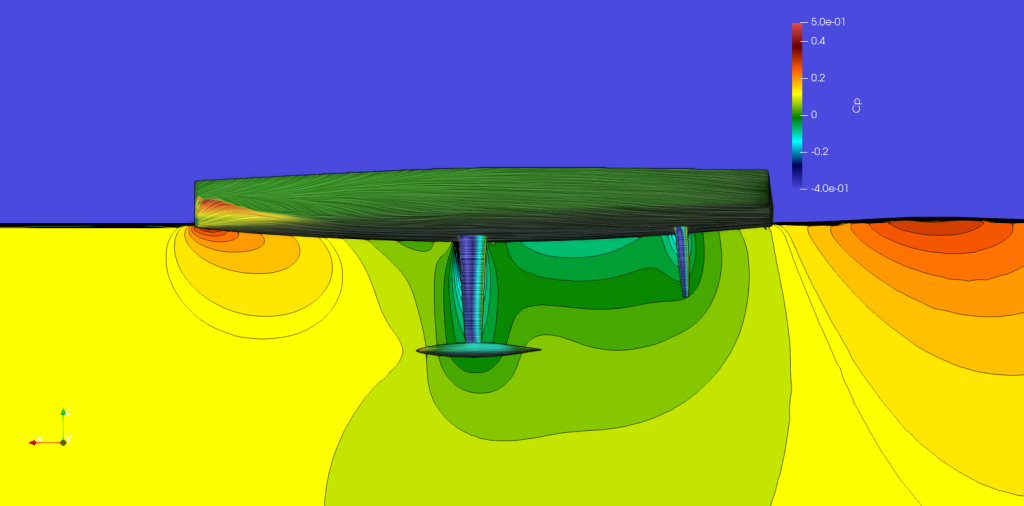
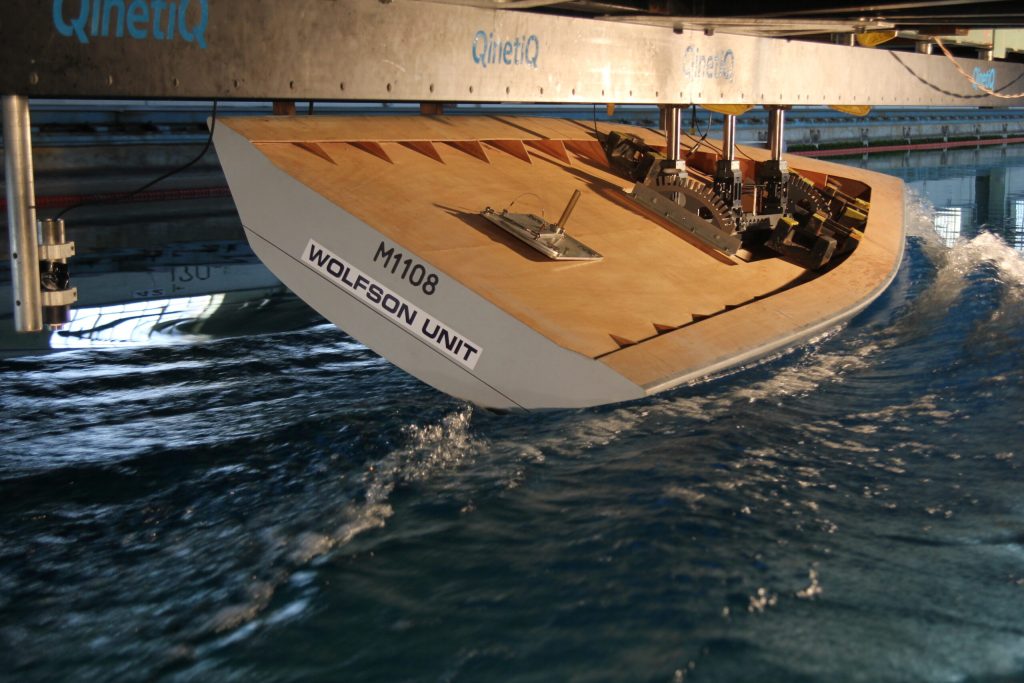
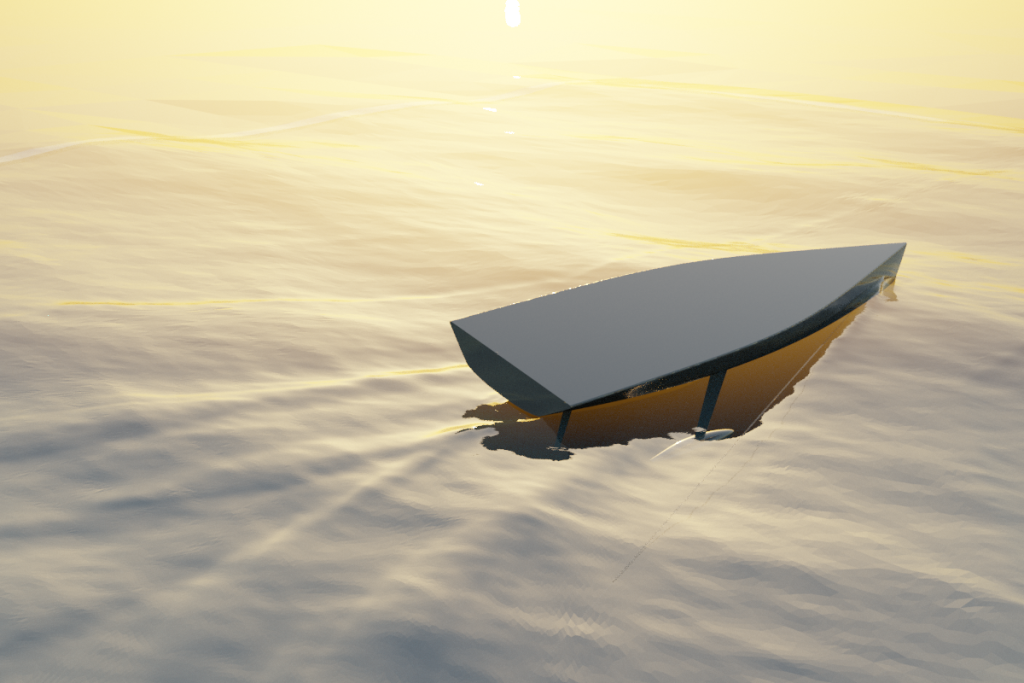
Help and Support
If you need any support with your project, please get in touch.
Related Services
-
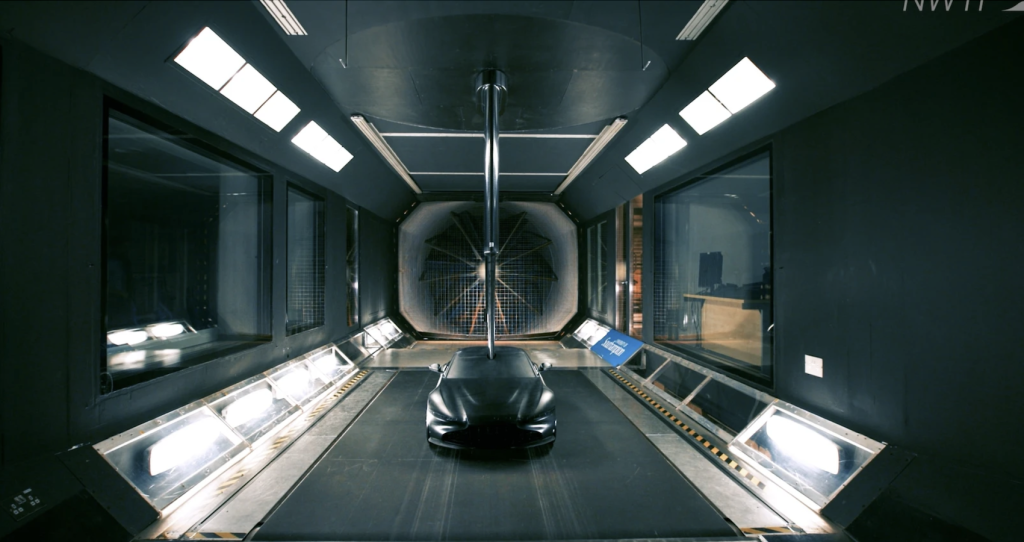
Wind Tunnel Testing
The Wolfson Unit offers several wind tunnel experiment services including: measurement of aerodynamic forces and moments, flow visualisation and other measurement techniques (e.g. LDA and PIV).
-

Computational Fluid Dynamics (CFD)
We have extensive CFD capabilities which complement the experimental testing and other services we provide, offering a cost and time effective solution to hydrodynamic design studies.
-
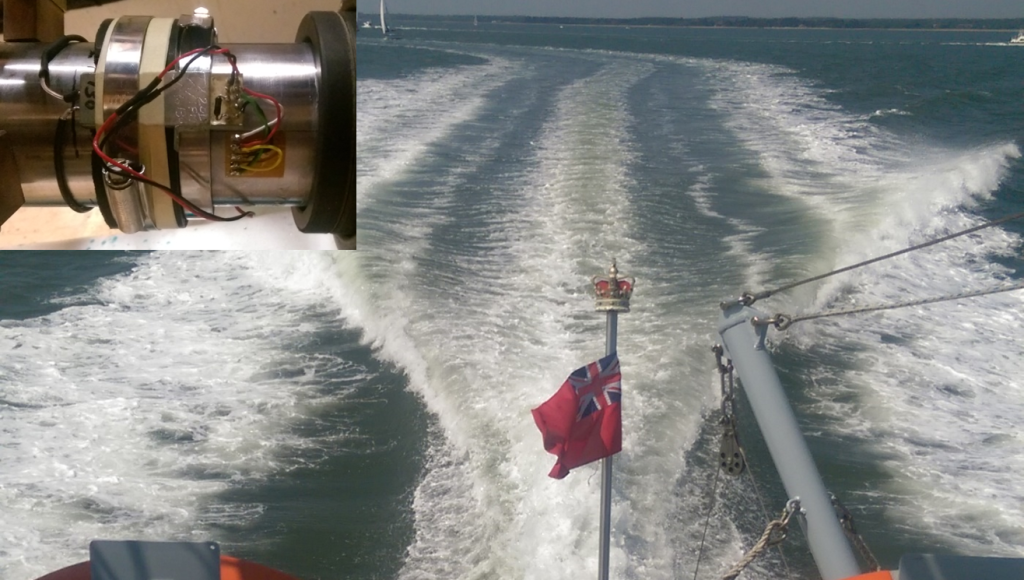
Full Scale Trials and Instrumentation
Measurements of vessel while completing sea trials. 6 axis motions, forces, moments, accelerations, temperatures, pressures, and engine data.

